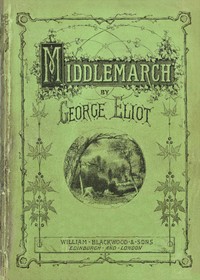 “Miss Brooke had that kind of beauty which seems to be thrown into relief by poor dress.”
“Miss Brooke had that kind of beauty which seems to be thrown into relief by poor dress.”
I first read Middlemarch during the summer of 2014 and was mesmerized. The lives of the inhabitants were painted in detail and somehow came alive until I was part of the community and involved in all their celebrations and struggles. I finished it in three weeks and then longed to go back. Well, it’s been over ten years since my last read of it and with some more maturity and the input of others, I was curious as to how I would respond upon my second reading.

